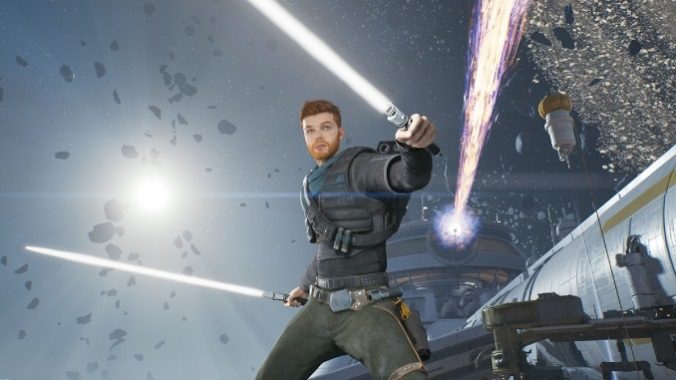Star Wars Jedi: Survivor’s Most Exciting Choice Should Influence More Games

Defying a pained launch mired in technical issues, Star Wars Jedi: Survivor strives to be bigger and better than its predecessor. Boasting dynamic lightsaber combat and envelope-pushing cinematic platforming, it’s easy to understand why many of those who are willing to look past the bugs are enjoying Cal and the Mantis crew’s latest adventure.
By all accounts, Survivor’s a certified hit, even if it does play things a bit safe. Like many AAA success stories before it, other games are sure to draw a lot from it, but I hope one subtle choice carries more weight than any other aspect. From the classic series Metroid to the Uncharted franchise, taking a protagonist’s powers away at the beginning of a sequel almost feels like a given for videogames. Star Wars Jedi: Survivor doesn’t do that, though—a choice that’s all the more surprising considering Survivor (and Fallen Order before it) draws water directly from Uncharted and Metroid’s wells.
In a franchise as shaped by fandom as Disney’s take on The Galaxy Far, Far Away tends to be, scenes reliving Cal’s experience during the Clone War and possibly even revisiting moments from 2019’s Fallen Order as he (re-)rebuilds his connection to the Force had Respawn razed his abilities wouldn’t be a shocking device and would likely play well with fans of the first title. We’ve seen beloved Force-wielders lose their powers in other media as characters like Luke Skywalker in The Last Jedi and Ahsoka Tano in various TV shows lose their mojo only to regain them in a moment of heroic triumph. Furthermore, the Force is magic; it’s as flexible and potent as a writer’s pen. If the narrative team behind the Jedi series wanted to, they could take away Cal’s abilities. It’s deeply exciting that they didn’t.
The decision to take a character’s powers away at the beginning of a sequel makes a lot of sense for the interactive medium, especially in the early days when titles were made for platforms with limited computing power. With narrative hinging on more overt devices, this kind of choice didn’t have to make sense when pixels and scope were limited to a few megabytes. Hell, those constraints defined some of gaming’s greatest works—like Super Metroid. But in 2023, even Metroid’s perennial choice to reset Samus’s abilities to barebones jumping and shooting doesn’t always work; watching her take down Jurassic space pirate-dragons and reptilian kaiju with badass swagger and ease doesn’t jive with her penchant for losing her abilities as frequently as she does. I know I’m ragging a lot on my favorite Nintendo franchise here, but that hallmark undermines her otherwise hyper-capable persona in a way that encourages the player to take her story and character less seriously. 2019’s Dread offers a marginally more interesting take on the series staple, but even that entry leaves me scratching my head.